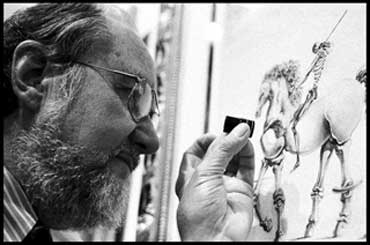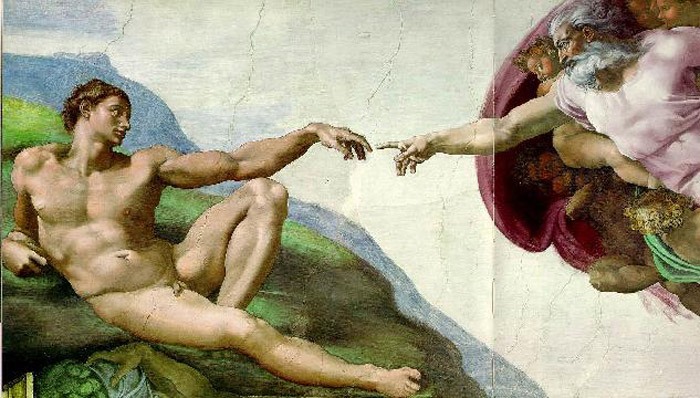On 24 Jun, 2010 With
Milizia gives the following interesting account of the removal of the immense mass of granite, which forms the pedestal or base of the equestrian statue of Peter the Great, from the bogs of the Neva to St. Petersburg, a distance of about fourteen miles. He also cites it as an instance of extraordinary ingenuity and skill in mechanics. It is, however, a much easier task to move a ponderous mass of rough, unhewn rock, than a brittle obelisk, an hundred feet or so in length, requiring the greatest care to preserve it from injury. It is also worthy of mention, that in widening streets in New York, it is no uncommon thing to see a three-story brick house set back…
Read More
On 24 Jun, 2010 With
In 1833, the French removed the smallest of the two obelisks which stood before the propylon of the temple of Luxor to Paris, and elevated it in the Place de la Concorde. The shaft is 76 feet high, and eight feet wide on the broadest side of the base; the pedestal is 10 feet square by 16 feet high. Permission for the removal of both the obelisks having been granted to the French government by the Viceroy of Egypt, a vessel constructed for the purpose was sent out in March, 1831, under M. Lebas, an eminent engineer, to whom the undertaking was confided, it being previously determined to bring away only one, and M. Lebas found it sufficiently difficult to…
Read More
On 24 Jun, 2010 With
This eminent historical painter, and very extraordinary man, was born at Zurich, in Switzerland, in 1741, according to all accounts save his own; but he himself placed it in 1745, without adding the day or month. He always spoke of his age with reluctance. Once, when pressed about it, he peevishly exclaimed, “How should I know? I was born in February or March—it was some cursed cold month, as you may guess from my diminutive stature and crabbed disposition.” He was the son of the painter, John Caspar Fuseli, and the second of eighteen children.
Read More
On 23 Jun, 2010 With
Plaintiffs demand refunds for “fake” works as gallery dismisses “smear campaign” By Martha Lufkin MICHIGAN. Park West Gallery, which says it sells 300,000 works annually and earns more than $300m in annual art sales revenue, including through auctions on 85 cruise ships, has been sued by ten customers seeking refunds. According to the complaint, filed in state court in Oakland County, Michigan, on 23 December, the gallery has refused to refund hundreds of thousands of dollars in purchase prices allegedly collectively paid by the plaintiffs for works by Dalí, Rembrandt and others. The art “was later found by experts to either be fake or have forged signatures, or to be heavily overpriced and misrepresented as bargains and investments”, the plaintiffs’ lawyers,…
Read More
On 23 Jun, 2010 With
The US artist reveals what he hopes to communicate to the public through his work By Adrian Dannatt Touring Jeff Koons’s gigantic Chelsea studio in anticipation of his big summer solo show at the Serpentine in London (until 13 September) is rich in discombobulation. This is partly because the place is just so large: endless cavernous rooms, one after the other, teeming with workers and assistants, more than 120 of them, all hard at work in intense silence producing paintings and sculptures, maquettes and studies, a high-tech laboratory somewhere between a James Bond set and a Warholian super-studio. But it is also because Koons himself, always unfailingly polite, gracious and soft-spoken, is a genius not so much at self-promotion as…
Read More
On 23 Jun, 2010 With
The most celebrated antique vase is that which, during more than two centuries, was the principal ornament of the Barberini Palace, and which is now known as the Portland Vase. It was found about the middle of the 16th century, enclosed in a marble sarcophagus within a sepulchral chamber under Monte del Grano, two miles and a half from Rome, supposed to have been the tomb of Alexander Severus, who died in the year 235. It is ornamented with white opaque figures in bas-relief, upon a dark blue transparent ground; the subject of which has not hitherto received a satisfactory elucidation, though it is supposed to represent the Eleusinian Mysteries; but the design, and more particularly the execution, are truly…
Read More
On 23 Jun, 2010 With
Obelisks belong to the oldest and most simple monuments of Egyptian architecture, and are high four-sided pillars, diminishing as they ascend, and terminating in a small pyramid. Herodotus speaks of them, and Pliny gives a particular account of them. The latter mentions king Mesphres, or Mestres, of Thebes, as the first builder of obelisks, but does not give the time; nor is this king noticed either by Herodotus or Diodorus. It is probable that these monuments were first built before the time of Moses, at least two centuries before the Trojan war. There are still several obelisks in Egypt; there is one erect, and another fallen at Alexandria, between the new city and the light-house; one at Matarea, among the…
Read More
On 23 Jun, 2010 With
A most singular art of forming pictures with colored glass seems to have been practiced by the ancients, which consisted in laying together fibres of glass of various colors, fitted to each other with the utmost exactness, so that a section across the fibres represented the object to be painted, and then cementing them into a homogeneous mass. In some specimens of this art which were discovered about the middle of the 18th century, the painting has on both sides a granular appearance, and seems to have been formed in the manner of mosaic work; but the pieces are so accurately united, that not even with the aid of a powerful magnifying glass can the junctures be discovered. One plate,…
Read More
On 22 Jun, 2010 With
The city of Herculaneum, distant about 11,000 paces from Naples, was so completely buried by a stream of lava and a shower of ashes from the first known eruption of Vesuvius, during the reign of Titus, A. D. 79, that its site was unknown for many ages. The neighboring city of Pompeii, on the river Sarno, one of the most populous and flourishing towns on the coast, as well as Stabiæ, Oplontia, and Teglanum, experienced the same fate. Earlier excavations had already been forgotten, when three female figures, (now in the Dresden Gallery) were discovered while some workmen were digging a well for Prince Elbeuf at Portici, a village situated on the site of ancient Herculaneum. In 1738 the well…
Read More
On 22 Jun, 2010 With
Maybe it’s been a persistent hum for the past 9 years, or maybe it’s something that has grown louder exponentially over those same 9 years, but recently I’ve noticed more and more complaints from deviants about nude artwork on deviantART. Some say they’re sick of seeing it all the time, some say it’s inappropriate and tasteless, and others liken the nude body to outright pornography. In addition to all of these complaints, there is a secondary stream of upheaval surrounding male nudes, where the complainer is perfectly okay with female nudity but completely appalled by male nudity. As you know (or should know), I went through a rather rigorous education involving art history. I wasn’t unique in my education, mind…
Read More



